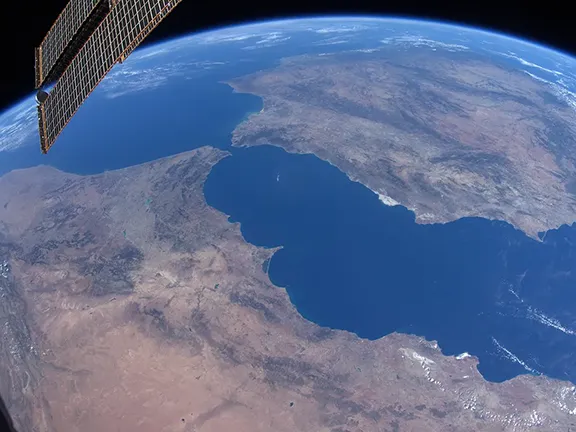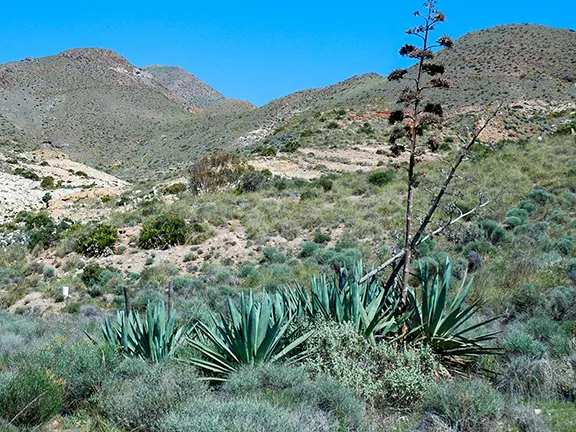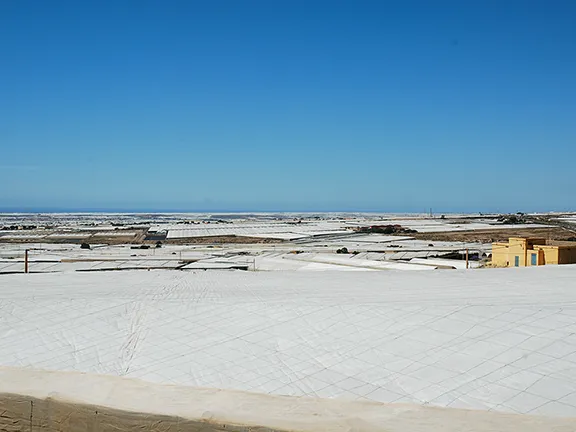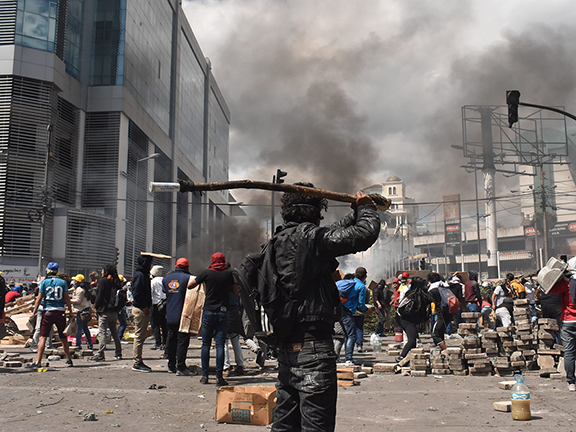The Plastic Revolution in Almeria
The Future
Although it has created problems as well as solved some, the Almeria Model is seen as a way to help feed a burgeoning population in developing countries. Since 2020 NASA have been looking at aspects of the Almeria Model that will help found colonies on other planets. The future looks bright for the Almeria Model.
By Nick Nutter on 2023-08-11 | Last Updated 2025-05-20 | The Plastic Revolution in Almeria
This article has been visited 2,353 times

Climate Change
The Mediterranean area has been warming at the rate of about 0.4 degrees Celsius every ten years between 1983 and 2006, the period during which the area covered by plastic greenhouses expanded.
In the area of Almeria covered by the greenhouses, during the same period, there has been a decrease in average temperatures equating to about 0.3 degrees Celsius every ten years.
The high albedo effect of the greenhouses is effectively reducing the amount of heat reflected back into the atmosphere. For the technically minded, the negative radiative force exerted by the greenhouses, reduces the net incoming shortwave energy diminishing the energy emitted as long wave radiation.
To date, creating high albedo surfaces as adaptation measures to climate change has not yet been considered as a mitigation or adaptation strategy in international protocols.
Do you enjoy my articles? For your reading pleasure, this website does not carry third party ads. You could help me write more articles by buying me a cup of coffee.
Land Sparing
The area covered by the greenhouses represents just over 3% of the total surface area of Almeria. The shift from extensive dry cropping to intensive greenhouse cropping has relieved the pressure on something like 30% of the surface area of Almeria, allowing the natural vegetation and its associated fauna to recover. Huge areas of Almeria have been 'spared for nature'.
Some of the protected areas in Almeria include: the Natural Parks of Cabo de Gata-Nijar, Sierra Nevada and Sierra Maria, the Natural Sites of the Tabernas Desert, the Aguas river valley, the Punta Entinas-Sabinal, the Mountain Range of Alhamilla and the Nature Reserve of the Albufera de Adra. These areas together with the other protected areas in the province sum up to more than 300,000 hectares of protected land. The protection of these areas was made in order to establish limits and prohibitions to the extension of greenhouses and touristic urbanisation
Reduction of Soil Erosion
An unexpected benefit of protecting large areas of land is that soil erosion has been significantly reduced in the mountains and hinterlands that were traditionally exploited for esparto grass production.
The Almeria Agribusiness Cluster


The Almeria Model Business Cluster
The development of the Almeria Model has brought new industries to the area, best illustrated by this simplified diagram of the Almera Agribusiness Cluster.
Research


Leading edge research is being undertaken at new Technology Centres that are currently being built. Perhaps the confidence shown by industry and government is reflected by the street name in one such centre just outside Almeria, Avenida de la Innovacion.
Feeding the World Population


This high yield conservation approach that reconciles human land use of the Earth with the conservation and recovery of natural habitats is increasingly being seen as an important way of using the Earth in a more sustainable manner whilst enabling us to feed the 9 billion people that will live on our planet by the year 2050.
Despite its shortcomings, the Almerian greenhouse horticultural system, with a productivity 30 times higher than the EU average, provides a possible model (for better or worse) for how this can be done. Having gone from deserted shrubland to the European Union's major vegetable and fruit exporter in just a few decades, this has to be a success story.
To Outer Space


The Almeria Model is of particular interest to scientists researching the use of greenhouses to grow plants in hostile environments, including on the planet Mars. Since 2020, NASA have been collaborating with scientists in Almeria looking for solutions that will allow greenhouses to function in low atmospheric pressures. They are also experimenting with growing plants at low pressures in sterile growing mediums enriched with microbiomes developed on Earth.
The future looks bright for the Almeria Model.
References
Fowler, Philip & Wheeler, Ray & Bucklin, Ray & Corey, Kenneth. (2000). Low Pressure Greenhouse Concepts for Mars. Mars Greenhouses: Concepts and Challenges.
France(2019). 'Organic farming 'supersized': An imperfect solution for the planet?'.
Ministerie van Landbouw, Natuur en Voedselkwaliteit (2019). 'Spain: Cooling trend in Almeria by its greenhouses surface'.
Do you enjoy my articles? For your reading pleasure, this website does not carry third party ads. You could help me write more articles by buying me a cup of coffee.
 1: Before the Revolution
1: Before the Revolution 2: Subsistence Agriculture
2: Subsistence Agriculture 3: The Almeria Model
3: The Almeria Model 4: Migrant Workers
4: Migrant Workers